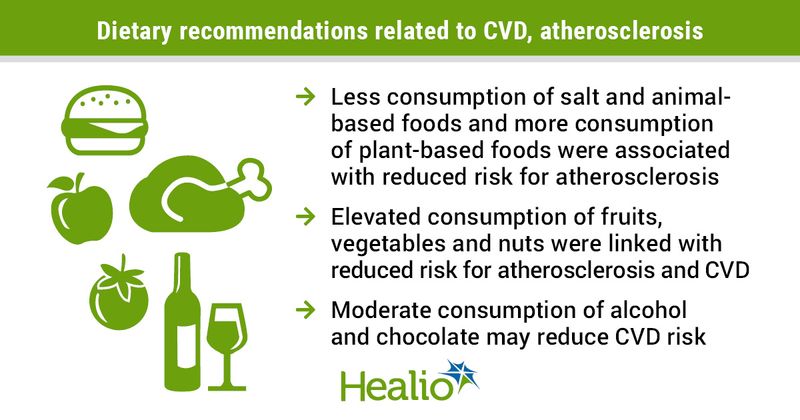Higher plant-based food consumption linked to lower atherosclerosis risk
Click Here to Manage Email Alerts
Diets featuring higher consumption of plant-based foods were associated with lower risk for CVD and atherosclerosis compared with diets higher in animal-based foods, according to a review published in Cardiovascular Research.
“There is no indication that any food is poison in terms of cardiovascular risk. It’s a matter of quantity and frequency of consumption,” Gabriele Riccardi, MD, professor of endocrinology in the department of clinical medicine and surgery at the Federico II University of Naples in Italy, said in a press release. “A mistake we made in the past was to consider one dietary component the enemy and the only thing we had to change. Instead, we need to look at diets as a whole and if we reduce the amount of one food, it is important to choose a healthy replacement.”

The authors analyzed meta-analyses of cohort studies and randomized controlled trials that included CVD outcomes. The aim of the review was to summarize updated evidence on risk for CVD associated with the intake of specific food items to substantiate dietary strategies to prevent atherosclerosis.
Plant-based foods beneficial
For healthy adults, lower consumption of salt- and animal-based foods and higher consumption of plant-based foods were linked to reduced risk for atherosclerosis. Similar results were observed for replacing butter and animal fat with nontropical vegetable fats.
Regarding meats, evidence suggested that consumption of poultry (three servings of 100 g per week) had a neutral relationship with risk for CVD. However, the consumption of red meats, including beef, pork and lamb, and processed meats should be limited to two servings of 100 g per week due to their association with increased CVD risk. As a replacement for red meat, the researchers recommended the consumption of legumes (four servings of 180 g per week) and fish (two to four servings of 150 g per week) to prevent atherosclerosis events.
Increasing an individual’s consumption of fruits and vegetables (400 g per day) and habitual nut consumption (30 g per day) showed benefits in lowering atherosclerosis and overall CVD risk. In addition, both full- and low-fat dairy products in moderate amounts were not associated with an increase in CVD risk, whereas moderate consumption of cheese (three servings of 50 g per week) and yogurt (200 g per day) was linked to a protective effect against developing atherosclerosis.
For cereals, the authors suggested limiting or replacing higher glycemic index foods, such as white bread and white rice, with whole grains and low glycemic index foods, such as oat, barley, pasta and corn tortillas, due to their association with elevated atherosclerosis risk.
Beverage consumption
The consumption of three cups daily of coffee and tea was associated with reduced risk for CVD, whereas the intake of soft drinks was associated with higher CVD risk, highlighting the need to replace these beverages with water. Drinking wine (two glasses per day for men and one glass per day for women) or beer (one can per day) was also associated with lowering risk for CVD compared with higher amounts or no intake.
There have also been meta-analyses that found a statistically significant decrease in CVD incidence when moderately consuming chocolate (10 g per day); dark chocolate is recommended because it contains less saturated fats and added sugars compared with milk chocolate, Riccardi and colleagues wrote.
According to the authors, the increase in CVDs demonstrates that global environmental risk factors play an important role in noncommunicable diseases, and a population strategy may aid in reducing the burden on health of inadequate eating habits.
“Future directions of nutritional research should include new methodological approaches taking into account more closely the potential of personalized markers to predict metabolic responses to dietary interventions, thus guiding the appropriate food choices at the individual level,” the authors wrote.

